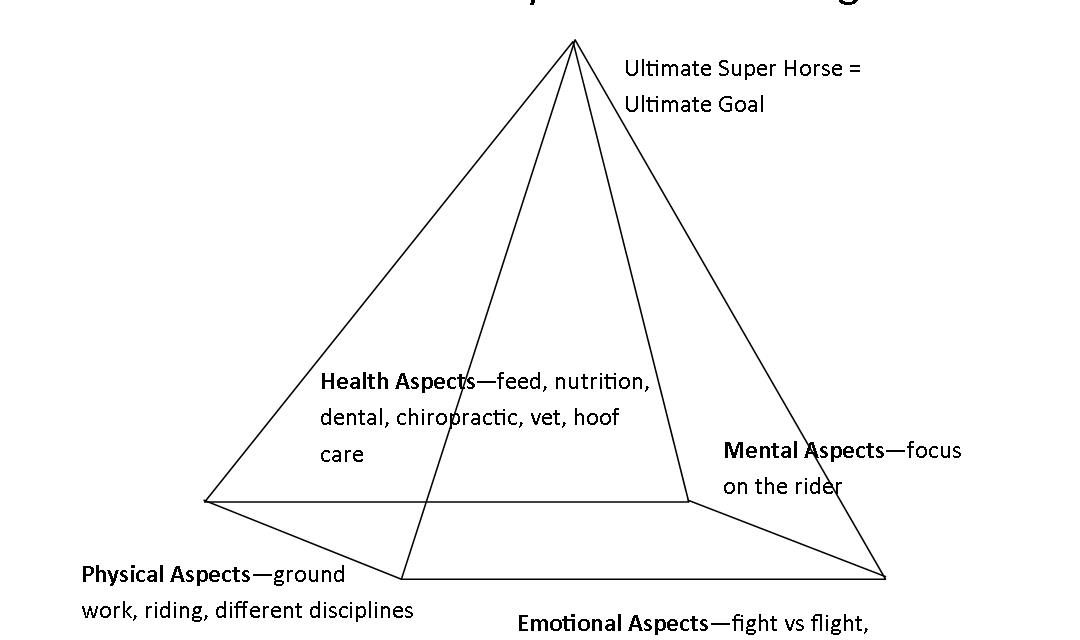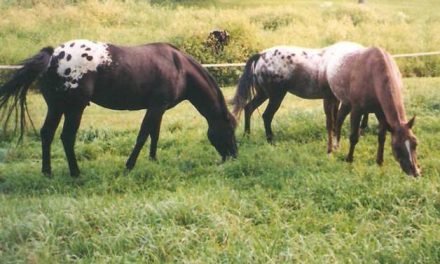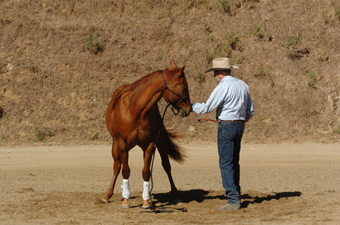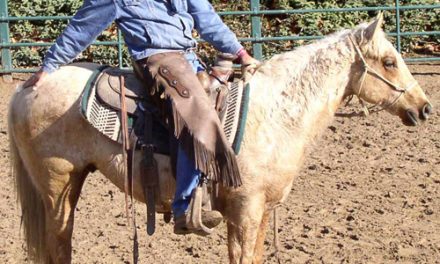Whether your discipline is dressage, reining, western pleasure or you simply enjoy a nice trail ride, your horse needs to be safe, responsive and obedient. There are many aspects in the training of a horse to accomplish this goal. Four in particular are important and should be recognized and understood. These areas are the physical, mental, emotional and nutrition/health care of a horse. Think of a pyramid. The base of the pyramid has four points each representing one aspect, the physical, mental, emotional, and nutrition/health. Every tier or layer represents education, lessons, and practice that build from the foundation. The tip of the pyramid is the goal although I don’t think the training of a horse is ever totally finished. However, once a horse has reached a certain level of performance, we say the horse is finished. This doesn’t mean we stop training. We should always have goals and should continue to raise the standard of performance. The issue is that if we don’t have the knowledge and we aren’t shown how to work with our horse, we can’t progress to the tip. The result is that we will not have the quality of horse that we would like.
First, we must have physical control of the horse. The question is, can you get your horse’s feet to go where you want him to go? This is a basic requirement of safe riding. While I know that times are hard for many people now and lessons may not be economically feasible, I view them like maintenance of a car. You can pay the mechanic now to keep the car in good shape or wait and pay a higher price later when there are major problems. Training can be thought of as an ounce of prevention. It is better to pay for assistance with your horse than to pay a medical bill when you are injured.
The physical part of training horses focuses on control. The horse must go forward, stop, back up and turn left or right at our direction. The ability of the rider to get the horse to do these things is important for every riding discipline and for basic safety. We also want to raise the standards and have the horse do more sophisticated moves such as lead changes and turnarounds. We want the horse to be responsive to a light cue.
Part of the physical aspect is also the physical shape of the horse. Gymnastic exercises to help develop the horse and get him to use himself properly. Probably 99% of the horses that come into the barn for training do not know how to use themselves. Most of the time horses are only here for three or four months. At the beginning of their training we start teaching them to come from the rear and start engaging. This means pushing and driving from behind instead of pulling themselves along from the front. We know the techniques and teach how to get the horses to do this.
Another aspect is the mental control of the horse. Can I get my horse to engage with me? It is important to get the horse to focus on the exercise or task at hand. Many horses come in for training and focus on anything and everything except the task we are working on. Most of the time we don’t ask enough of our horses to require they engage their minds. A simple exercise such as going forward on the lunge line, stopping the feet and changing direction, is part of very basic foundation training and causes the horse to focus. Eventually we add to the basic cues and raise the standard. The expectation is that the horse will move forward in a relaxed manner. There will be a nice shape in the body; in other words, the horse will be bent to the size of the circle being worked. The shoulder will not be to the inside and the nose will be bent slightly in. It may sound easy but without the knowledge of how to accomplish this it can be difficult. Without a teacher or trainer to guide you, raising the performance standard can be a formidable task.
If you are a dressage rider, you do not want your horse looking around instead of being in a nice frame. If you are western pleasure, you want to ride with a loose rein. If your horse is looking all over the place, his mind is not engaged and he is not relaxed. Whatever the discipline, we need to get the horse’s mind engaged, as much as it can. Some horses do better at tasks than others. Some have a better work ethic. With some horses it is easier to get their attention.
Once we have the mind working and engaged with us, we have to have the emotions under control. Some horses have a higher emotional level than others. Some have more fight instinct. I have a little mustang that I adopted awhile ago. She has a very good mind and learns things very quickly but she likes to argue and fight about everything. My job is to continue working through her issues until she is compliant. Without the knowledge of how to get her to soften and relax, I would not get very far with her training. That doesn’t mean we run the horse into the ground but hardy exercise doesn’t hurt a bit. Through exercises we get the resistance or fight out of the horse. When a horse is calm and relaxed, then learning can occur.
Some horses have a high flight instinct. Most horses will bolt when they are frightened. Horses are prey animals and they are born with that instinct. If the horse has a high flight instinct, we need to bring that emotional level down. This is all-important because you are not going to have a good performance horse unless the emotions are under control.
A healthy diet along with proper medical, dental, chiropractic and hoof care is important to the physical condition of a horse. The type of feed also affects the emotional level of the horse. The hotter the feed, the higher the emotional level. When you know more about these aspects, you are better able to ensure the good physical condition of your horse.
Success in all areas of horse management comes through knowledge. There is a great deal of opportunity to learn. Knowledge can be gained by having a trainer, attending clinics, reading, watching a DVD or demonstrations at a horse exposition. If you have a great trainer doing a demonstration at an exposition, you can learn a lot from just watching. Even watching a more experienced rider can be helpful. You will have more success working with your horse by increasing your knowledge. Work your horse with consistent exercises and you will be able to see if he is improving. I like to watch and work with a trainer for 20 to 30 minutes and then go and practice by myself. Everyone has a different way of learning and you need to find the formula that works for you. To be successful you need to gain the knowledge that will give you a better relationship with your horse.





